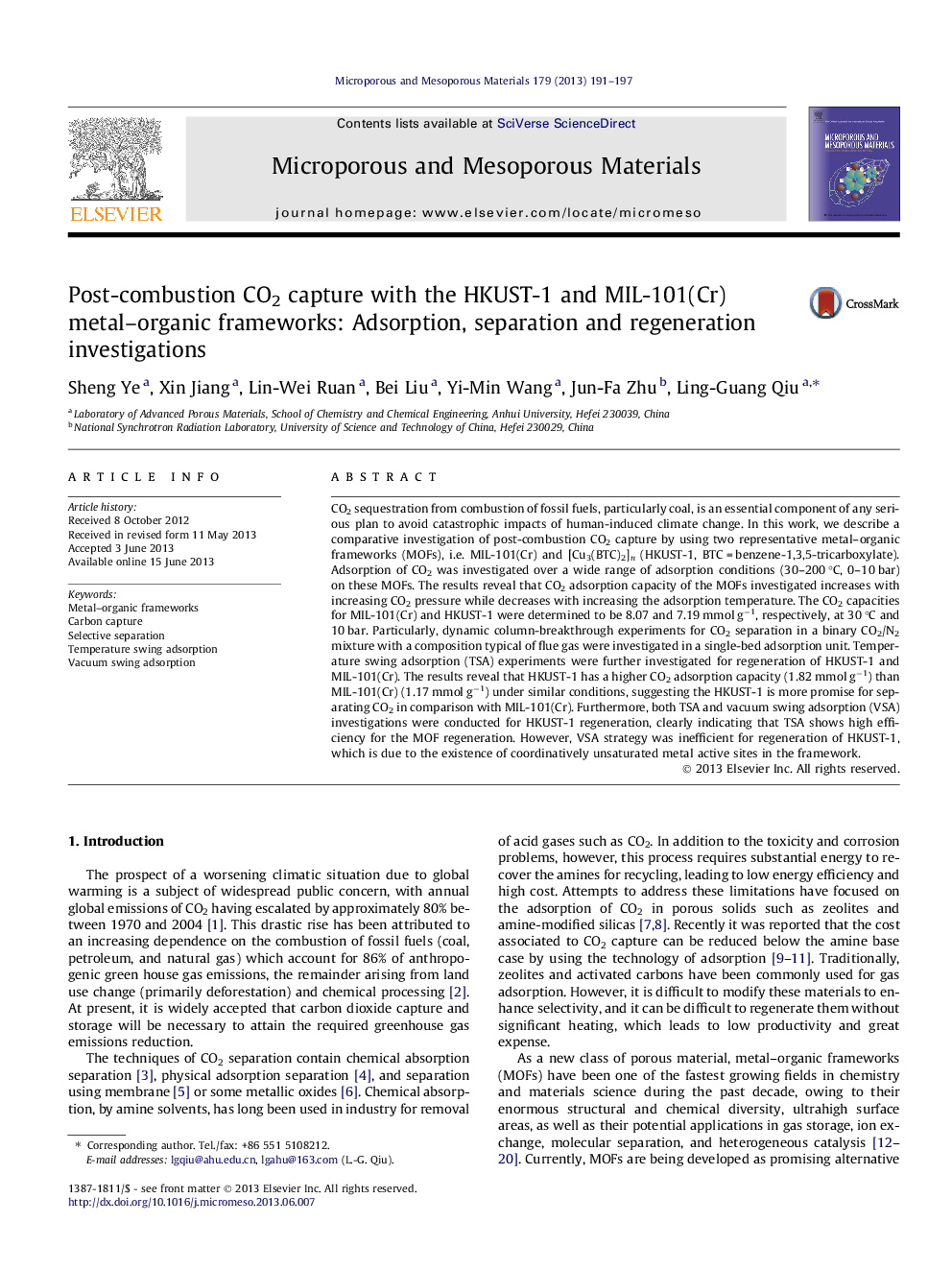| کد مقاله | کد نشریه | سال انتشار | مقاله انگلیسی | نسخه تمام متن |
|---|---|---|---|---|
| 73481 | 49059 | 2013 | 7 صفحه PDF | دانلود رایگان |

• Post-combustion CO2 capture with metal–organic frameworks (MOFs).
• Statics and kinetics of CO2 adsorption on MOFs.
• Breakthrough experiments with CO2/N2 binary mixture.
• Different strategies were compared for MOF regeneration.
CO2 sequestration from combustion of fossil fuels, particularly coal, is an essential component of any serious plan to avoid catastrophic impacts of human-induced climate change. In this work, we describe a comparative investigation of post-combustion CO2 capture by using two representative metal–organic frameworks (MOFs), i.e. MIL-101(Cr) and [Cu3(BTC)2]n (HKUST-1, BTC = benzene-1,3,5-tricarboxylate). Adsorption of CO2 was investigated over a wide range of adsorption conditions (30–200 °C, 0–10 bar) on these MOFs. The results reveal that CO2 adsorption capacity of the MOFs investigated increases with increasing CO2 pressure while decreases with increasing the adsorption temperature. The CO2 capacities for MIL-101(Cr) and HKUST-1 were determined to be 8.07 and 7.19 mmol g−1, respectively, at 30 °C and 10 bar. Particularly, dynamic column-breakthrough experiments for CO2 separation in a binary CO2/N2 mixture with a composition typical of flue gas were investigated in a single-bed adsorption unit. Temperature swing adsorption (TSA) experiments were further investigated for regeneration of HKUST-1 and MIL-101(Cr). The results reveal that HKUST-1 has a higher CO2 adsorption capacity (1.82 mmol g−1) than MIL-101(Cr) (1.17 mmol g−1) under similar conditions, suggesting the HKUST-1 is more promise for separating CO2 in comparison with MIL-101(Cr). Furthermore, both TSA and vacuum swing adsorption (VSA) investigations were conducted for HKUST-1 regeneration, clearly indicating that TSA shows high efficiency for the MOF regeneration. However, VSA strategy was inefficient for regeneration of HKUST-1, which is due to the existence of coordinatively unsaturated metal active sites in the framework.
Figure optionsDownload as PowerPoint slide
Journal: Microporous and Mesoporous Materials - Volume 179, 15 September 2013, Pages 191–197